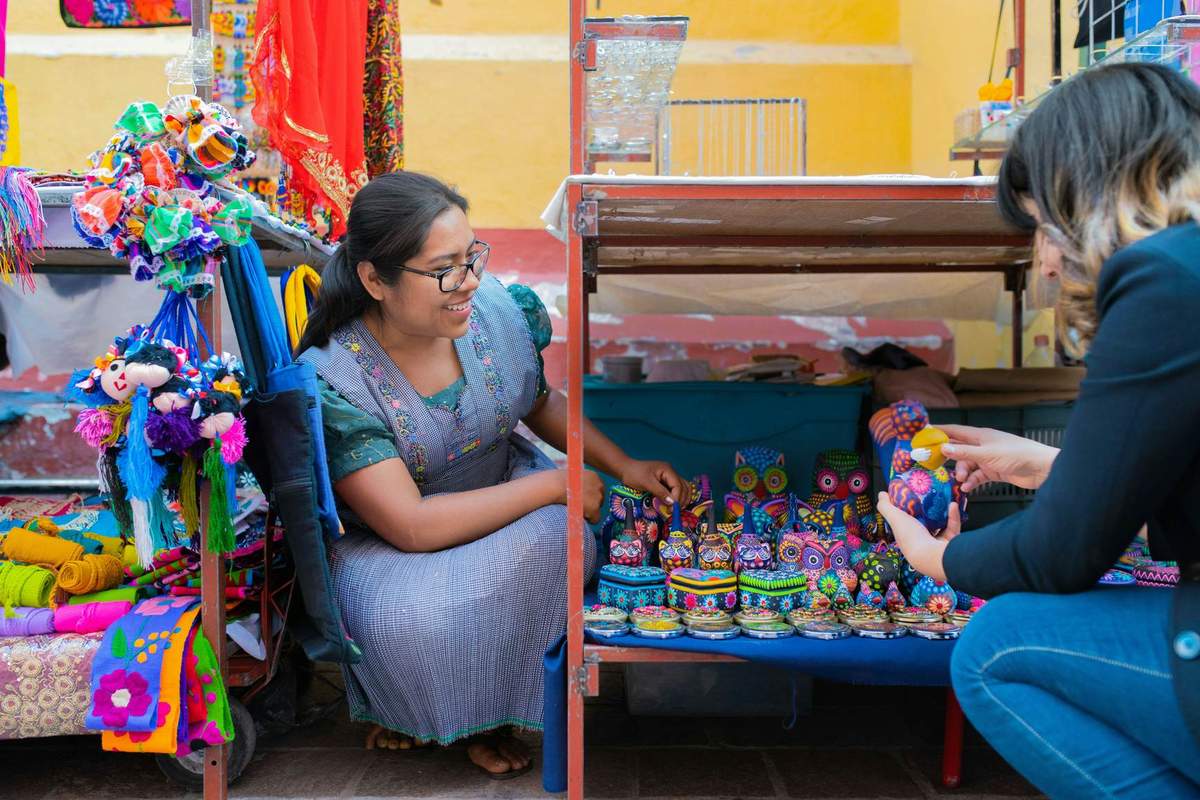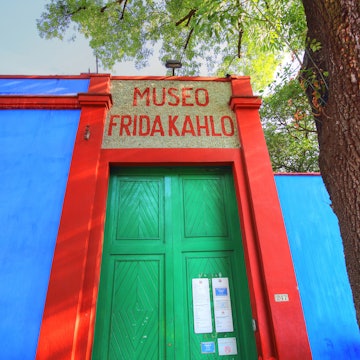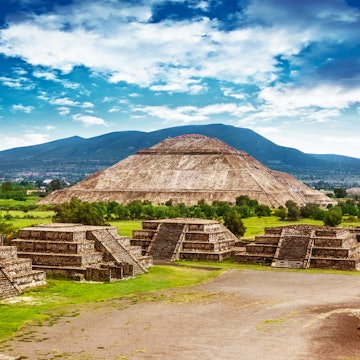
Afro-Mexican culture in Mexico: What to know about this important history
Nov 27, 2024 • 7 min read

In the Afro-Mexican region of Guerrero people perform traditional Dia de Muertos dances influenced by African heritage © AFP / Getty Images
From crumbling Aztec empires to flamboyant mariachi bands, Mexico has a wealth of history. Less known and often overlooked is the country’s connection to the African diaspora and the rich Afro-Mexican cultures that followed.
There are several reasons why this culture isn’t well known outside of Mexico. Although Mexico has one of the largest populations of African-descended people in Latin America, Afro-Mexicans are still a relatively small community in comparison to the overall population. In addition, most of the enslaved Africans brought to Mexico by the Spaniards were men who ended up marrying into other, primarily Indigenous ethnic groups, resulting in a large mestizo, or mixed, population. After Mexico gained independence from Spain, it was this mestizo heritage that was embraced.
History is written by the victors, which causes many worthwhile events to be overlooked or misunderstood. Although not well-known, Mexico has inextricable ties to the continent of Africa that reveal themselves in the country’s history, art, and present-day culture. Here are a few facts about Afro-Mexican history that you might not know.

Enslaved Africans brought to New Spain arrived in Veracruz
In the sixteenth century Mexico’s Spanish colonizers brought an estimated 200,000 enslaved Africans to the region. The port of Veracruz, which borders the Caribbean, was the primary arrival point for these ships and as a result, the city continues to reflect a strong influence in its music, dance, cultures, and food. This amalgamation can be witnessed every year during the city’s Carnaval celebrations. The annual pre-Lenten festival serves as a week-long reminder of the region’s revolutionary spirit and remains one of the largest and most well-known Carnaval events in Mexico.

Veracruz celebrates African-heritage with music
Son Jarocho is a folk music style that dates back 250 years and draws influence from a blend of Mexican, African, and Indigenous cultures that thrive in the Veracruz region. A rock-and-roll version of the son jarocho song 'La Bamba' popularized the genre in 1958 and it was resurrected again in the late 80s by the group Los Lobos for the hit film by the same name. A unique blend of stringed instruments with rhythmic dance steps that serve as percussion, the popularity of son jarocho has spread to Mexico City and onward to California. Take an evening stroll through the Zócalo in Veracruz and you’re likely to stumble upon an impromptu son jarocho jam session.

The first community for free Blacks in North America was founded in Veracruz
It was founded by Gaspar Yanga, who was a chief of the Yang-Bara tribe in the area of present-day Guinea, West Africa before he was sold into slavery. In 1570, Yanga led a revolt and after a successful escape, he settled in the highlands. By 1600, his settlement had joined with another group of escaped enslaved people led by Francisco de la Matosa, and for decades they resisted capture from Spanish colonialists. In 1618, Yanga negotiated with Spanish officials to grant freedom to the fugitive slaves and independence to their village, which became known as San Lorenzo de los Negros. In 1932, the small town changed its name to honor its founder and is now known as Yanga in the state of Veracruz. In 2017, Yanga became a Unesco World Heritage site. A statue of Gaspar Yanga along with a plaque now stands in the town square. Every year on 10 August, Yanga holds a carnival to celebrate Gaspar Yanga’s legacy.

Mexico had North America's first Black president
Mexico became the first country in North America to have a Black president in 1829. Born to an Afro-Mexican father and Indigenous-Mexican mother, Vicente Guerrero fought in the Mexican Revolution, eventually helping the country gain independence from Spanish rule. He became president in 1829.

Slavery was abolished on Independence Day — September 16, 1829
It was under Vicente Guerrero that slavery in Mexico was abolished on September 16, 1829 (which is now recognized as Mexico’s Independence Day), approximately 40 years before the United States would do the same. This move angered American slaveholders, and in 1830, he was forcibly removed from office. Guerrero returned to the southern Mexican states to organize another rebellion, although some accounts say he fled in fear for his life. He was put on trial and later executed on February 14, 1831.
Though Guerrero had petitioned for a southern state separate from Mexico, it wasn’t until 1849 that the state of Guerrero was created and named after him. The state’s motto is “My Motherland Comes First,” which was said by Guerrero in his refusal to surrender to Spanish rule. Today Vicente Guerrero’s remains are held in the Monumento a la Independencia in Mexico City to recognize his role in the country’s independence.
Pío Pico, the last Mexican governor of California, was Afro-Mexican
One of the most recognized names in Los Angeles, Pío Pico, the last governor of California under Mexican rule, is a prominent figure in Afro-Mexican history. The businessman and politician became governor of Alta California (now the state of California) in 1845. After the occupation of Los Angeles by American troops the following year, Pico eventually gave in and retreated to Mexico.
Though his tenure as governor was brief, lasting only one year, his impact on the state remained, with Pico returning as a private citizen two years later. He would continue to serve in local politics. Pico’s legacy is marred by the acquisition and loss of a fortune in land and cattle. Despite his gambling misfortunes, many sites in Southern California are named after the politician, including the famous Pico Boulevard, Pico Canyon, and Pío Pico State Historic Park.

Guerrero has the largest concentration of Afro-Mexican citizens
Despite this rich history, Afro-Mexican only became recognized as an ethnic identity on a preliminary census in 2015. This gave 1.38 million Afro-Mexicans the opportunity to self-identify for the first time. The Costa Chica region, which encompasses the southern states of Guerrero and Oaxaca, has the largest concentration of Afro-Mexican citizens. In Afro-Mexican communities in Costa Chica, the Dance of the Devils is performed as a form of ancestor reverence during Dia de Muertos celebrations. The dance has roots in the traditional dances of Enugu State in Nigeria and is typically characterized by the sounds of horns, rattles and drums.
The influence of Afro-Mexican culture refuses to be ignored, resurrecting itself in colorful carnivals where participants find themselves entranced by the persistent pulse of African beats.
Experiencing the cuisine and culture of Afro-Mexicans in the Costa Chica
A visit to the Costa Chica will also uncover the storied, rich Afro-Mexican culinary influences in the region. An influx of enslaved Africans to Mexico during the 16th and 17th centuries eventually led to a concentrated settlement of Afromexicanos along the southern coast of the Guerrero and Oaxaca states. This complex yet centuries-long blending of Indigenous Oaxacan and African traditions has created a widely popular, although often uncredited, contribution to Mexican cuisine.
Much of the region’s food traditions stem from its proximity to the sea and geographical isolation that made it a safe haven when escaping slavery. As a result, many Afro-Mexican dishes incorporate the use of fresh fruits and vegetables grown locally along with foraged mussels, oysters, and fish or rich, hearty meat dishes.
Mole de pescado and mole de camarón are two traditional dishes that you’ll find everywhere but have distinct origins in Afro-Mexican cooking. The highlight of cooking in the Costa Chica is their flavorful rendition of barbacoa; a slow-stewed, wood-fired meat stew of steer, pig, lamb or wild meat and a marker of celebration at special occasions. Restaurant dining in this area is limited, but you may find yourself on the receiving end of local hospitality. A few dining options, however, include Restaurant Costa Chica in Acapulco de Juárez for seafood dishes or El Coste in Puerto Escondido.
Each of the region’s towns, like Cuajinicuilapa and Marquelia offer glimpses of this community’s unique culture. In addition to understanding its rural way of life, the Costa Chica reminds visitors of the vastness and varied nature of Mexico’s cultural identity.
Make sure you're ready for anything with travel insurance from our trusted partners.















